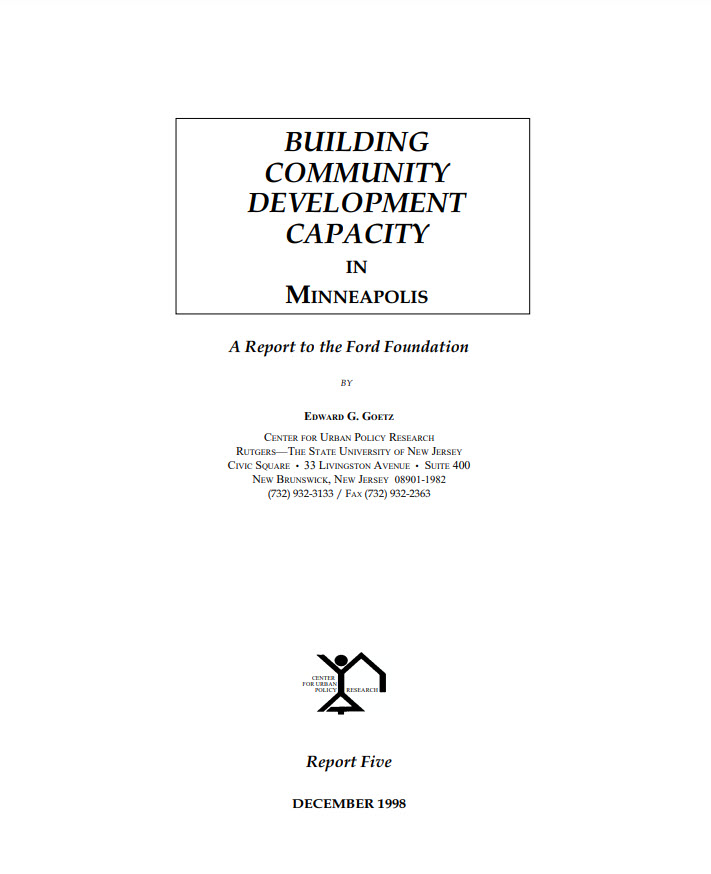Minneapolis CDCs operate in an organizationally dense environment, with active corporate and philanthropic sectors contributing substantial resources for community development. In addition to the city itself, a variety of actors have provided support to Minneapolis CDCs. GMMHC provides important predevelopment
financing; FHF offers project capital and capacity-building assistance. More recently, small amounts of capacity-building and predevelopment financing have been available from MHFA, and asset management refinancing has been provided by the Interagency Stabilization Group. This network of organizations and support programs provides Minneapolis CDCs with a fairly comprehensive set of programmatic supports.
Such a fragmented system of capacity support, however, requires CDCs to piece together assistance from a number of separate sources. This increases the uncertainty of continued support and imposes costs on the CDCs in terms of time and energy spent in the pursuit of assistance. In addition, there are significant gaps in the system of capacity support available to Minneapolis CDCs. Most notably, there is little available in the city or regionally to assist in the networking and
political capacities of nonprofit developers, and this has undoubtedly hindered the ability of the CDC movement to effectively respond to the changing political environment of Minneapolis in the 1990s. Another gap in the system of capacity assistance is in the area of human resource development. Given the key role of community development partnerships in Philadelphia and El Paso relative to training and human resources, this is one area in which a CDP might make a significant impact in Minneapolis. Finally, the one form of capacity-building assistance that is most often mentioned by CDC officials as lacking is core operating support, which
would allow the organizations to pursue additional development opportunities while dealing with their growing asset management responsibilities. These are all problems that Minneapolis CDCs would like to see addressed—problems that could be resolved by a CDP.
